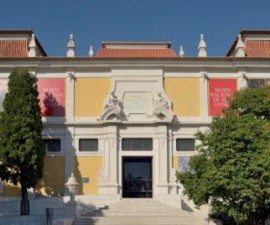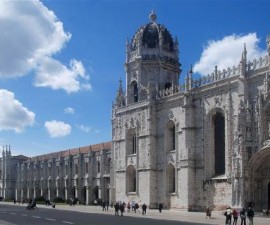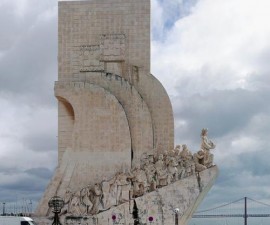The Belem Tower is a UNESCO World Heritage Site thanks to its historical importance dating back to the days of Portugal’s discoveries. The tower marks the place from where Portugal’s Caravels sailed off to explore the great unknown, and is a symbol of the country’s days of discovery and empire.
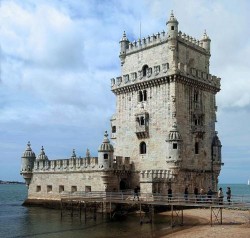
The tower is located in the popular Belem district of Lisbon, which lies right on the banks of the Tagus. It was constructed between 1514 and 1519 and is a delightful example of Manueline style, incorporating many stonework motifs of the discoveries, alongside historical figures.
The Belem Tower was designed by Francisco de Arruda, a renowned architect of the time, who had previously worked on Portugal’s fortifications in Morocco, leading him to incorporate some interesting Moorish-inspired influences into his work.
The tower is primarily built of lioz limestone, a rare stone which is light in colour and which is found predominantly in the Lisbon area.
The Belem Tower was commissioned from Francisco de Arruda by King John II. It was intended both as a monument to the discoveries, to mark the grand entrance to the city from the waters beyond, and to form part of a defence system to fortify the city at the mouth of the Tagus river.
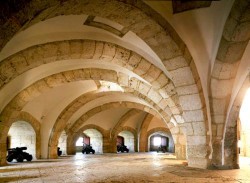
The Belem Tower is easily reached via the Avenida de Brasilia and is located close to the Jeronimos Monastery, which is also found in the Belem district. Some maintain that the tower was originally built right in the middle of the Tagus river mouth, and that its position on the shore only came about after the river was redirected following the devastating earthquake of 1755.
In practice however, it was indeed built on a small island, but one located relatively close to the shore, that has finished up as a part of the Tagus banks itself thanks to progressive development in the area.
The monument incorporates a rectangular tower with a hexagonal bastion and elongated flanks. On the north-eastern side it is accessed by a drawbridge which is decorated with plant motifs. Above this sits the royal coat of arms of King John II and there are a number of decorative elements representing the discoveries, the military and the ocean.
It is possible to go inside the Belem Tower. It is some 12 metres wide and 30 metres tall, served by a circular staircase leading to an open octagonal space with corridors to the bartizans.
The King’s Hall on the second floor offers lovely views over the Tagus river and it is possible to climb up to appreciate them first hand. The dungeons are also worth a look – a reminder of the days when the tower was used as a military prison.
The Belem area is also home to one of Lisbon’s leading cultural venues, the Centro Cultural de Belem. Here you will find the city’s Design Museum, whose collection of 20th-century art and design pieces provides a compelling contrast to the historic Belem Tower.
Belem Tower
Avenida Brasilia
1400-038 Lisbon
Portugal
Tel: +351 213 620 034
Fax: +351 213 639 145
Email: mjeronimos@igespar.pt
www.torrebelem.pt
